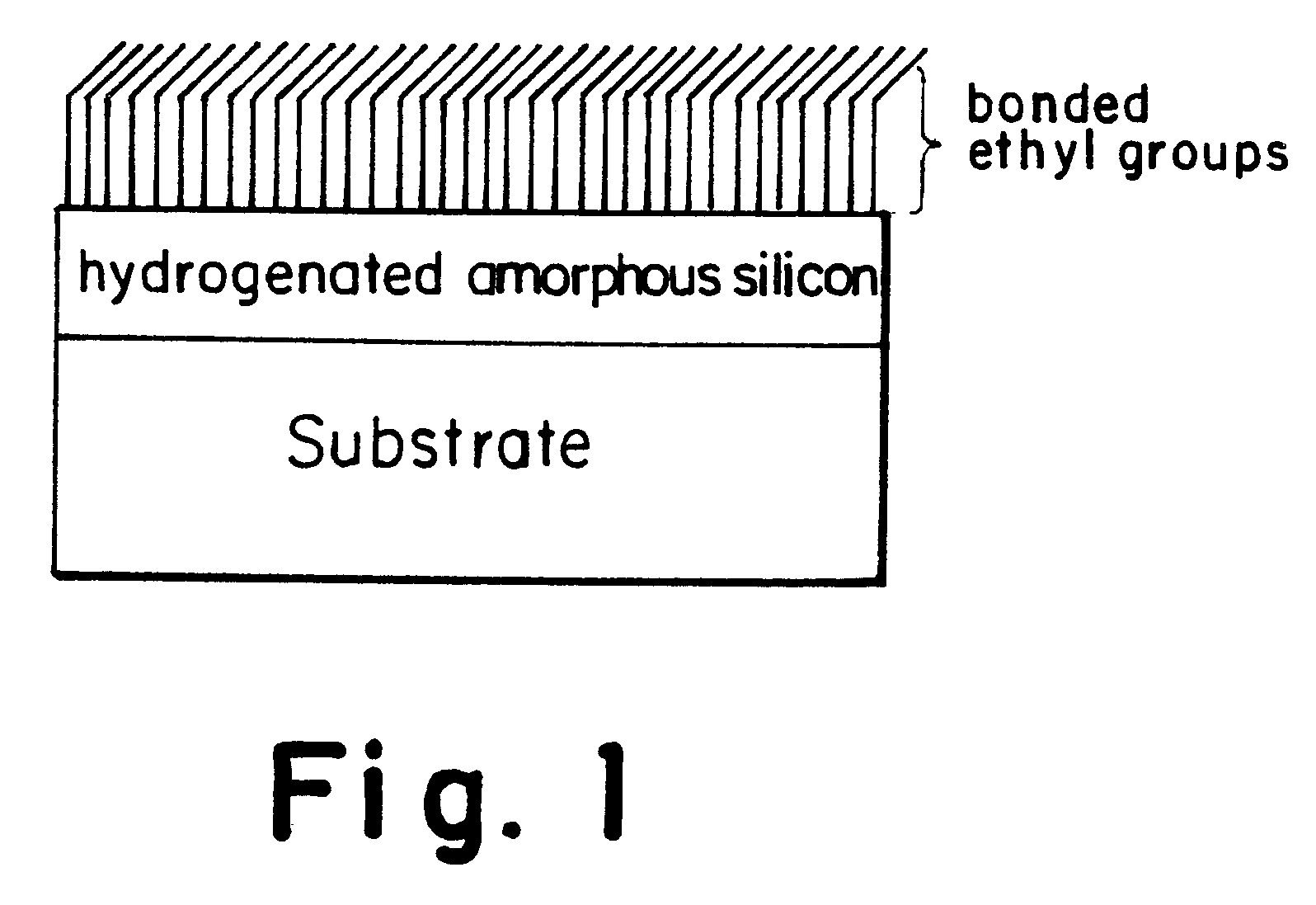Surface modification of solid supports through the thermal decomposition and functionalization of silanes
a technology of thermal decomposition and functionalization of silane, which is applied in the direction of liquid surface applicators, organic compounds/hydrides/coordination complexes, physical/chemical process catalysts, etc., can solve the problems of reintroduction of undesirable surface activity, difficult removal of complete catalyst from treated system, and trace presence of catalys
- Summary
- Abstract
- Description
- Claims
- Application Information
AI Technical Summary
Benefits of technology
Problems solved by technology
Method used
Image
Examples
example 1
Borosilicate inlet liners are used in gas chromatography instruments as the area of sample introduction and transfer on to a gas chromatography column. Since raw borosilicate glass has an active surface and is adsorptive to many compounds, it is typically deactivated through a silanization process. Standard silanizations give a relatively inert surface, but do not allow for universal inertness to acidic and basic compounds (e.g., carboxylic acids and amines). Some liners work well for acidic compounds and fewer types work well for basic compounds. The current invention provides a surface which will prevent the adsorption of acidic and basic compounds to the inlet liner surface.
Borosilicate inlet liners are packed into a stainless steel vessel which is sealed and connected to inlet and outlet tubing. The tubing is passed through the ceiling of an oven and connected to two separate manifolds through which gases and vacuum can be applied to the vessel via valve systems. With atmospheri...
example 2
Uncoated fused silica capillary columns are used in gas chromatography instruments as an inert transfer line from the inlet liner to the coated fused silica capillary analytical column. Since raw fused silica glass has an active surface and is adsorptive to many compounds, it is typically deactivated through a silanization process. Standard silanizations give a relatively inert surface, but do not allow for universal inertness to acidic and base compounds (e.g., carboxylic acids and amines). Some deactivated fused silica columns work well for acidic compounds and fewer types work well for basic compounds. Also, typical deactivations are not resistive to repetitive subjection to caustic environments. The current invention provides a surface on a fused silica capillary which will prevent the adsorption of acidic and basic compounds, as well as resist degradation by caustic environments.
Fused silica capillary tubing is coiled and tied in 30 m lengths, and its end are passed through the...
example 3
It is desirable to use steel vessels to store low levels of sulfur compounds such as hydrogen sulfide and mercaptans. Steel is highly adsorptive to these compounds, and therefore is not considered an appropriate storage media for low parts per billion concentrations. The current invention provides a surface which will prevent the adsorption of low-level sulfur compounds to the steel vessel surface.
Steel vessels are packed in to a large stainless steel containment vessel which is sealed and connected to inlet and outlet tubing. The tubing is passed through the ceiling of an oven and connected to two separate manifolds through which gases and vacuum can be applied to the vessel via valve systems. With atmospheric pressure air in the vessel, the vessel temperature is increased to 120.degree. C. and held for 1 hour. At the end of 1 hour, the vessel environment is made inert by a nitrogen purge and applied vacuum. The vessel is heated to 400.degree. C. After evacuation of the vessel, 100...
PUM
| Property | Measurement | Unit |
|---|---|---|
| Fraction | aaaaa | aaaaa |
| Time | aaaaa | aaaaa |
| Time | aaaaa | aaaaa |
Abstract
Description
Claims
Application Information
 Login to View More
Login to View More - R&D
- Intellectual Property
- Life Sciences
- Materials
- Tech Scout
- Unparalleled Data Quality
- Higher Quality Content
- 60% Fewer Hallucinations
Browse by: Latest US Patents, China's latest patents, Technical Efficacy Thesaurus, Application Domain, Technology Topic, Popular Technical Reports.
© 2025 PatSnap. All rights reserved.Legal|Privacy policy|Modern Slavery Act Transparency Statement|Sitemap|About US| Contact US: help@patsnap.com

